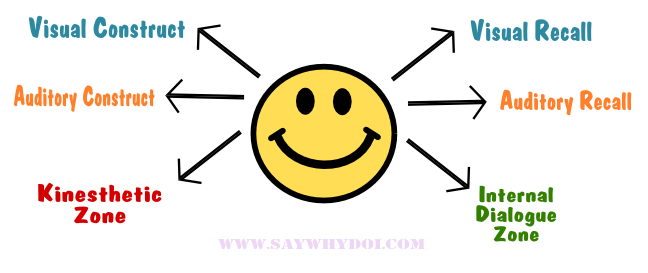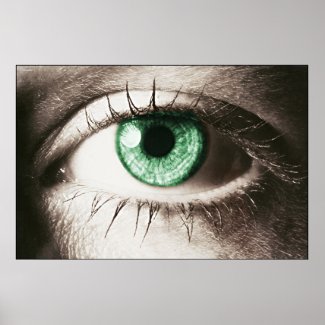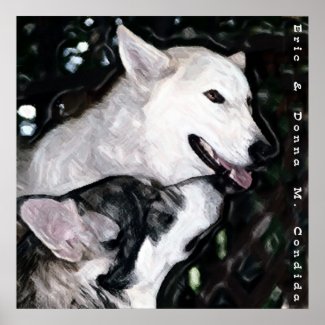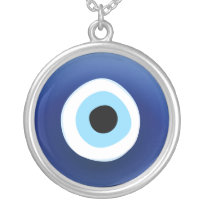Next time you’re in a group of chatting people, direct your attention to their eye movements. As you track their eye direction you’ll notice different patterns when a person is talking and when they are listening. Sometimes you’ll notice a listener staring intently at one speaker but not at another, and sometimes you’ll notice a talker flit their eyes every which way. Why do people make all these different eye movements?
Reason 1: Eyes tend to be drawn towards the dominant people in the group
You can often tell who the dominant person in the group just by observing the eye locations of the people in the group. This is because we have a natural inbuilt tendency to rest our eyes on the more dominant people in the group rather than those people in the group who we deem to be less dominant than us. Why do we do this? It’s because we respect the dominant members more, so we deem them more deserving of our attention. We look at people who talk when we respect and admire their words. In our society and in the animal kingdom at large, dominant members of the group are often held in high regard. Less dominant people want to be respected and gain higher status too, and one way to do this is to get close to the highest status person in the room, even if only by showing them respect and looking at them when they talk.
Another often-observed dominance-related eye movement pattern is that a more submissive member of the group will display “checking eye movements”. This is when you gaze at the dominant person in the group to see how they are responding to something that’s just been said, and you respond accordingly to win their respect in your seeming like-mindedness.
The dominants in the group tend to be aloof, often not gracing the more submissive group members with eye contact unless when in direct conversation with someone, in which case the dominant person will tend to look boldly and confidently at their object.
If everyone in the group is of similar social hierarchy, eye movements tend to be subordinate all around even though no-one is subordinate to the other. Eyes focus not on the most dominant person in the group but rather on whoever happens to be talking. The person talking does checking eye movements to see that everyone is following them. This subordinate eye movement conducted by all in the group is a means of indicating that the environment is non-threatening and friendly. Equally dominant friends treat each other with respect, treating each other as the dominant one to generate good feelings.
Reason 2: Eye locations are sometimes fixed on people for whom we have strong emotions
Aside from focusing on the dominant people in the group, sometimes we focus on people whom we feel very strongly about.
Strong attraction, lust or love can make you stare at your object of desire without noticing you’re even doing it. You can often tell that a couple is in a good and loving place if you see that as one speaks their partner is gazing at them, barely taking their eyes off them. A good example of this is in this video by VlogBrother Hank and his wife, Katherine (from about 25 seconds in).
Desmond Morris suggests that the lover’s gaze may be a subconscious search for degrees of pupil dilation, to check that their partner has dilated pupils confirming their love and attraction towards them.
Similarly, intense hatred, anger and jealousy can cause you to stare threateningly at whoever the unfortunate individual is, in a subconscious attempt to intimidate them. The intimidating energy of the angry stare can be so strong that it is thought that it may be behind the origin of the “Evil Eye” superstition of the Middle East and Mediterranean. This superstition is based on a fear that malevolent stares can bring bad luck. People developed charms of little eyes to stare right back at the Evil Eye, so that all the bad energy of the Evil Eye will be deflected onto the charm rather than onto the individual.
Reason 3: More subtle eye movements are related to brain processes
As people talk, their eyes often aren’t fixated on one spot but rather flick to certain locations.
Although as already discussed, listeners often gaze at the speaker (as long as he is well-respected and at least equal in dominance status), the talker himself often exhibits very different eye movements. The speaker’s gaze may occasionally drift to the people in the group to check that they are listening but more often you’ll notice that their eyes make subtle movements, flitting from left to right, up and down.
Why do the eyes move in all these directions as we talk? One reason is that the eye location is connected to what internal mental brain processes are going on.
The development of the study of Neurolinguistic Programming (NLP) has widely publicized our understanding of these subtle eye movements and their meanings.
Although these subtle movements can be idiosyncratic and unique to an individual, there are also general patterns that can be seen in the vast majority of people. These general observed patterns are as follows:

(Note that the diagram indicates the eye directions as you would see them, looking at the individual front-on. So when an individual looks to their left, that would be as if they are looking to your right.).
The direction may be a mirror image of the above diagram in left-handed people and in a minor subsection of right-handed folk.
Breaking it down: What do these subtle eye movements mean?
- Looking up and left: Visual Recall: These eye movements indicate the person is remembering something they’ve seen and are picturing it in their mind.
- Looking up and right: Visual constructed image: According to NLP eye movement theory this indicates that the person is imagining something they’ve never seen before and is creating a picture of it in their mind.
NB Staring ahead with eyes appearing unfocused and unmoving can also be a sign that your brain is accessing the visual parts of the brain. In other words, you are literally day dreaming and imagining some kind of picture or movie in your mind, even if you’re not consciously aware of the images you are seeing.
- Looking to the left: Auditory recall: Eye locations going to the left indicate the person is remembering a sound they’ve heard and are hearing it in their mind.
- Looking to the right: Auditory constructed sound: The meaning of eye movements to the right is that the person is imagining something they’ve never heard before, creating and hearing that sound in their mind.
- Looking down and left: Internal dialogue: If you track a person’s eyes to the lower left side, it is likely they are talking to themselves because this is where your eyes look when have an internal dialogue.
- Looking down and right: Kinesthetic: Eye movements to the lower right indicate the person is imagining what something feels like when they touch it, smell it or taste it, or what a feeling is like in their body. When the eye direction turns here it could also indicate the person is in touch with a certain emotion and what it feels like in their body.
You can test this out with a friend.
- Ask your friend what the color of their car is and ask them to see their car in their mind. See if their eyes move towards the Visual Recall side (looking up and to their left).
- Ask your friend to imagine what a blue dog with pink spots would look like. See if their eyes move towards the Visual Construct side (looking up and to their right)
- Ask your friend what the ringtone on their phone sounds like and to hear it in their mind. Notice if their eyes go to the Auditory Recall side (looking to the left)
- Ask you friend to imagine what a dog would sound like if he could talk in a certain voice. Do their eyes go to the Auditory Construct side? (looking to the right)
- Ask your friend to imagine the smell of freshly baked bread and to imagine the feeling as you bite into it and taste it. Do their eyes move towards the kinaesthetic zone? (looking down and right)
Interesting side note: Using eye movements in therapy
Because eye movements are closely linked with how we connect with our memories, our thoughts and our feelings, eye movement exercises can be effective as part of therapy.
NLP uses eye movement monitoring to help get down to the root cause of negative thinking patterns. Knowing whether you are telling yourself something negative, seeing negative images in your mind or connecting with the emotions directly can help NLP practitioners find ways to replace these habits with positive ones.
Another positive use of eye movements in therapy is EMDR (Eye Movement Desensitization Reprocessing). Studies are still being conducted to discover its full potential but so far research has shown the potential of eye movement training exercises in helping to cope with stress and other negative emotions.
References
Morris. 1979. Manwatching: A Field Guide to Human Behavior
Morris. 2007. The Naked Woman: A Study of the Female Body
Plante. 2010. Contemporary Clinical Psychology
Related articles
- Winking: Why do we wink?
- Why do we get sleep in the eyes?
- Why do we have a little pink corner on the inside of the eye?
- Why do we get red eyes in photos?
- Head nod: Head nod: Why do I nod my head to say “yes”?
- Head shake: Head shake: Why do I shake my head to say “no”?
Related Products












First time here. Awesome site. Great post.
Vlogbrothers! DFTBA!
Great introduction to eye patterns! Very usefull for discovering people’s strategies and for gaining rapport
Very amusing site! I love the video you attached to demonstrate “Reason 2″. The video clearly demonstrates the way in which a person in love might stare at their partner.
Nice work! I will be back to your site in the future.
~Stephanie @sostephaniesays
I DO THIS A LOT…somebody always looks at me, as if… very interesting…I’d look at this more often… thanks to all who medically do this… wishing the best ,blessings,for speedy recoveries… stay cool- tempered/friendly & such… we shall be better for all sakes… learning nevr hurts…do what U can… start slow,then increase…cherish many things… be one w/ nature… smile ,laugh,investigate, your surroundings… peace/esperanza,all those words…
Thanks….. ; D